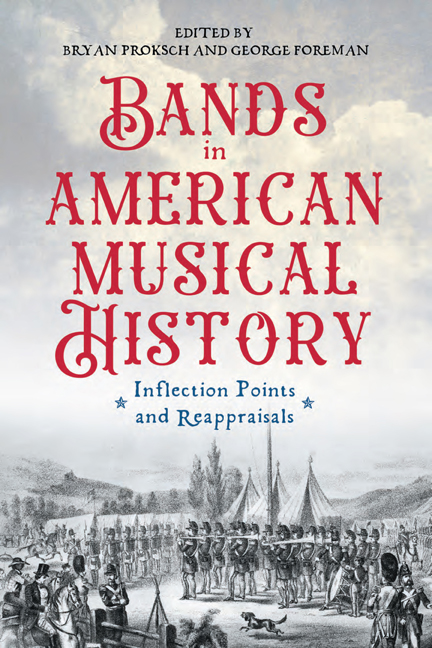8 - Soldiers or Artists? Civil War Musicians and the Band in Nineteenth-Century America
Published online by Cambridge University Press: 11 May 2024
Summary
In retrospect, it seems inevitable that the American Civil War was a crucible for bands in the United States. Certainly the timing was auspicious, given the widespread acceptance of valved brass instruments, the expanding manufacturing and publishing industries that led to increased accessibility and affordability, and a growing middle class hungry for music that suited its tastes and lifestyles. It did not hurt that amateur and professional bands established themselves with American audiences in the decades leading up to the war, playing music from any genre in most every performance setting possible. Bands were an everyday part of life for the average American by 1860.
Yet the nineteenth-century soundscape was changing, as a new concert culture began to take shape. Tension emerged between the Eurocentric intelligentsia that desired edifying music (epitomized by the orchestra) and those with more democratic tastes who happily consumed most every kind of music (and the band in particular). This was the first stage in what would become the entertainment versus education argument seen in the public statements by John Philip Sousa and Theodore Thomas regarding music at the Columbian Exposition of 1893. Some saw music as a useful part of daily life, while others viewed music as a special event that served no purpose other than aesthetic contemplation. “Great” music, it was argued, was not constrained by the mundanity of daily life. Art served the intellect, transporting the listener into a spiritual realm above material existence; it was l’art pour l’art. For these listeners, any music that served a nonmusical function would fall short of this Romantic ideal. This is what lay behind John Sullivan Dwight’s critique of bands from 1856:
Brass bands have their uses and their excellencies. We have frequently had occasion to remark the beautiful harmony and richness and precision of some one of them. But one grows weary of their incessant loud appeal; one hears so much of it, that the state of mind induced is anything but musical; it becomes a part of the general din and rumble which one hears and heeds not, nerves permitting. Brass bands are splendid in the right time and quantity. But they should be kept to characteristic uses.
- Type
- Chapter
- Information
- Bands in American Musical HistoryInflection Points and Reappraisals, pp. 260 - 278Publisher: Boydell & BrewerPrint publication year: 2024



